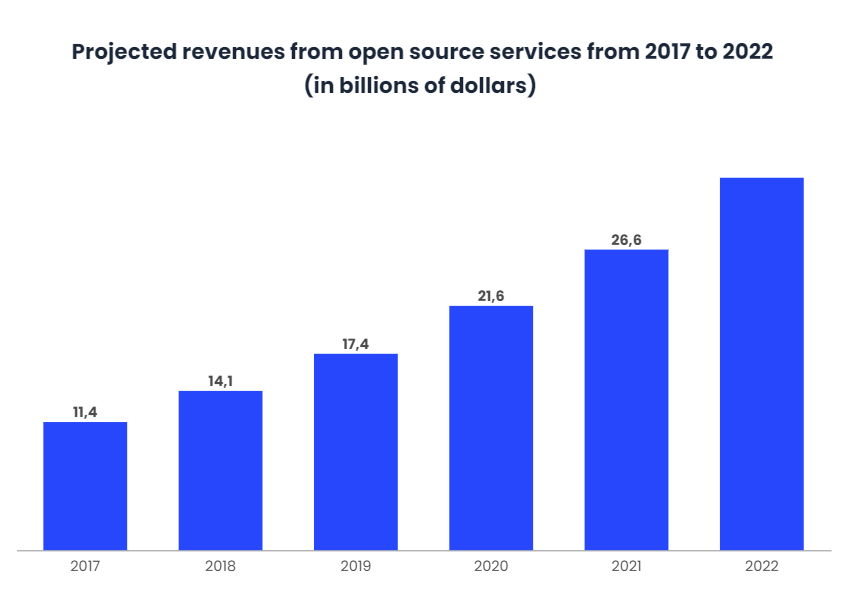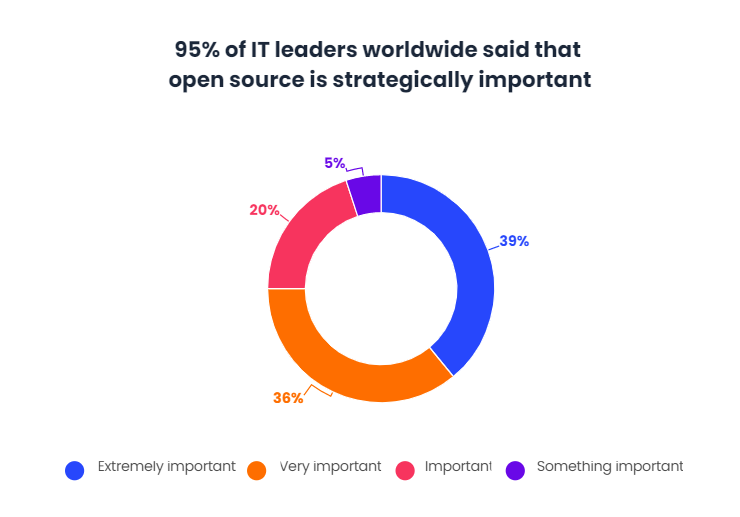Open Source software, yes or no?

Open Source is changing the way software is built. From hotel reservations to banking, almost every new application starts with code that anyone can inspect, modify and improve.
Being an Open Source company is the order of the day. Companies like Google, Facebook, Amazon and many others are slowly making Open Source an integral part of their strategy, services and operating systems. These companies publish projects with open licenses that allow users and developers to take advantage of them. And that is basically what Open Source software is designed to do: everyone can see, modify and distribute the code in any way they want.
This software is usually cheaper, more flexible and more durable than its proprietary alternatives, since the communities are in charge of its development and not just one author or one company.
The most important example of an Open Source system is that created by Linux. The open-source ‘Linux kernel’ has brought thousands of new computer systems to life: from the Android system on mobile phones, to the system used by astronauts’ computers on the International Space Station, to the one used by CERN scientists in Switzerland.
Main advantages and challenges of Open Source
There are many reasons why people choose Open Source software over proprietary software, and that is because this option allows programmers around the world to collaborate on improving a software: fixing errors in the code; updating the code with new technology; and creating new features. This way, users have a system where security issues are detected and fixed more quickly and new features are updated and created more often.
The main advantages are:
- Security: since the source code is freely accessible and the Open Source community is very active, programmers verify and improve the Open Source. It is considered a living code, rather than a private and stagnant code.
- Transparency: with Open Source, the user can verify what types of data are moved and where, or what kind of changes were applied to the code, and track them.
- Reliability: Active Open Source communities constantly update the software. Open standards and peer review ensure that Open Source is regularly and properly evaluated.
- Flexibility – The Open Source user is not required to use the code in a specific way, and can count on community support and peer review when implementing new solutions.
- Lower cost: the code itself is free. When an external company is hired, the user pays for support, security reinforcement and help in managing interoperability.
- No vendor lock-in: Freedom for the user means they can move Open Source anywhere and use it for anything at any time.
- Open Collaboration: Active Open Source communities provide the ability to seek out help, resources, and insights that transcend the interest of one group or company.
As far as challenges are concerned, we have to emphasize:
- Ongoing maintenance: maintenance and due diligence will be required to ensure that once the solution reaches the market, it continues to function effectively. This can mean everything from monitoring releases and updates to monitoring ‘orphan’ software and running your own tests to ensure effectiveness after release.
- Troubleshooting: With no company behind the development of the software taking responsibility, there is no option to file a complaint about any issue, nor is there a point of contact to demand resolution. The resolution of possible problems will depend exclusively on the capacity of each one to investigate in the different forums to find solutions.
- The problem of being non-profit programs: if they lose funding or interest at some point, communities will be forced to abandon their development. If a case like this arises and the community that is part of it is not interested or involved in maintaining it, the problem will grow as they stop receiving updates and improvements. In these cases the solution ends up being, mostly, the migration to other programs that meet the necessary requirements.
- Data protection requirements: Today, almost all companies are subject to data protection requirements. This can vary depending on where a company operates, but some jurisdictions require the company to own the code it provides in order to comply with data protection laws. Before you begin a software development project, it is essential that you review the particular legislation that affects you and decide whether Open Source is an appropriate solution.
Las empresas se suman al Open Source
Open Source is at a fairly good moment, since the market in 2017 was valued at 11.4 billion dollars, in 2019 it exceeded 17 billion dollars, and it is estimated to grow to 32.95 billion dollars by 2022, which shows that it has no intention of slowing down in the short term.

Much of the Open Source action is taking place at the enterprise level, especially in terms of the involvement of some companies whose mindset seems to have changed. Previously, the code was proprietary and untouchable: it was indispensable, and sharing it with third parties was not contemplated.
That philosophy has relaxed considerably, and more and more companies are sharing software projects that were previously closed and proprietary. In fact, 95% of IT leaders around the world said that Open Source is strategically important.

Enterprise Open Source continues to grow in importance, with the majority of organizations, 68%, having increased their use of enterprise Open Source and another 59% planning to continue that growth. IT leaders highlight its widespread use, even in areas that businesses consider critical, such as security, databases, the cloud and data analytics. In fact, 86% said the most innovative companies are using enterprise Open Source.
What must companies do to be Open Source?
While businesses make extensive use of Open Source in their applications, few have taken advantage of all the benefits that the Open Source community (OSS) has to offer. Companies look to this software and to the best practices of their community to find new ways to differentiate themselves from their competitors, but often lack experience in working with external communities or breaking internal silos. They try to hire more developer resources or find the best software tools, but still cannot keep up.
To become Open Source companies, organizations must:
- Using OSS, collaborating and contributing to Open Source communities: The success of an Open Source enterprise begins with the way it engages with communities. Large companies such as SAP, Capital One, and Netflix have moved from open source consumers to leaders by creating and sharing their own Open Source projects.
- Adopting ‘innersource’ by incorporating Open Source culture, tools, and practices into the workplace: Collaboration, transparency, and reuse of code are not unique to Open Source communities. Successful Open Source companies also adopt these same best practices for building internal software, an approach commonly known as ‘innersource’.
- Securely leveraging OSS and its communities to create software that is secure and compatible: When it comes to enterprises, secure use of Open Source is especially crucial. Successful Open Source companies innovate at scale with OSS communities while maintaining strict security and compliance standards. That does not mean ignoring or degrading the potential risk. Instead, being an informed OSS consumer means keeping up to date on the Open Source being used and using the best security tools and practices to keep your computer safe.
All three ingredients help companies thrive digitally and accelerate innovation through Open Source.
Conclusions
Although there are some obstacles, the implementation of Open Source software is an option that continues to gain market share and supporters. A company that is concerned about the security and scalability of its programs should seriously consider Open Source alternatives that can be adapted to its processes. It is no coincidence that companies the size of Amazon, Ticketmaster, BBVA use Open Source software in their production and support processes.
But then, the question remains: does Open Source live up to the claims, and should companies use it when developing their applications?
The answer is not so clear.
Open source has a lot of potential for companies to innovate and really take advantage of the next generation of technology. It increases time to market and can be an effective solution for most projects, backed up by worldwide usage statistics.
However, those planning to participate in Open Source must also consider the challenges and risks associated with it, so as not to fall victim to any of the common pitfalls of Open Source usage.


